Written by Laura Flores Shaw
Over a century ago, Dr. Maria Montessori discovered through scientific observations of children that they are not empty vessels to be filled — they are intrinsically motivated doers. She saw that providing a hands-on learning environment that valued choice, concentration, collaboration, community, curiosity, and real-world application produced lifelong learners who viewed “work” as something interesting and fulfilling instead of drudgery to be avoided. Now, research in psychology and neuroscience continually validates Dr. Montessori’s conclusions about children and learning, and Montessori schools are flourishing — not just preschools but, increasingly, elementary, middle and secondary schools. So as the education reform debate thunders on, with the many sides agreeing on little beyond the fact that our schools as they are currently designed are failing our children, I can’t help but wonder: Where is the voice of the Montessori movement in the American school reform conversation?
I first learned about Dr. Maria Montessori’s approach to human development while in graduate school to become a therapist. At that time, I was struck by the similarities between some of Montessori’s tenets and the theories and practices of therapeutic intervention for children. Choice, a key Montessori tenet, is at the heart of child therapy. Children’s emotional, social, and academic development improve when they are empowered through choice. At the same time, children, according to the psychological literature, need to have appropriate boundaries and limits to feel safe and secure. Montessori’s “freedom with discipline” (where “discipline means “to teach”) for children ages 3-6 and “freedom with responsibility” for children ages 6 and up align with this literature.
My passion for Montessori, however, really ignited while I was interning as a school therapist in a suburban public school district. Taking students out of a classroom where they had very little choice and bringing them into a small office where I empowered them with choices seemed counterproductive, a short-term fix. That’s when I realized I no longer wanted to provide interventions for children experiencing social, emotional, and behavioral issues. Instead, I wanted to be involved in the prevention of such issues. That, I knew, was happening in Montessori environments. So, I changed career course and became the Head of School at a growing accredited Montessori school for children ages 18 months to (soon to be) 15 years old.
Over the past five years, I’ve seen firsthand how powerful and effective the Montessori method is with children of varying temperaments and from varying backgrounds. I’ve seen children with severe developmental delays improve significantly because of how Montessori teachers are trained to interact with their students. And I’ve seen elementary-aged children from conventional schools who abhor learning have their love of learning reignited in a Montessori classroom.
Why is Montessori so effective? We know there is an indisputable link between movement and cognition, with the former actually enhancing the latter. We know that people of all ages need to feel a sense of control over their lives and that lack of control leads to depression and learned helplessness, which inhibits learning. We know from a huge body of research that extrinsic rewards and punishments don’t work and can actually adversely affect intrinsic motivation. Research tells us all of these things, yet students at conventional schools are still confined to their desks, with rigidly scheduled days, receiving grades for every aspect of their learning and behavior. Is it any wonder that the public school district needs therapists?
In contrast, students in a Montessori classroom are free to move about the room and are provided varying types of work spaces — tables, floor mats, and low-lying tables called “chowkies.” They’re given large blocks of time — generally around three hours — in which they choose their work and participate in one-on-one presentations (at the preschool level) or small group lessons (in elementary). There are no grades or tests. Instead, assessments are occurring daily through the teachers’ keen observations of the children. (The children are taught how to test themselves or each other so they can know if they’ve really mastered something, such as math facts. There are some things that do need to be memorized!) Ultimately, it is expected that the children will use their time in a productive way, balancing their subjects and being responsible for their learning, and what we see daily in our classrooms is that they are. At the end of each semester, teachers provide each student and his or her parents with an overview of the student’s progress, pointing out areas that need improvement.
Education reformers these days cast their nets far and wide to try to find a solution to the current malaise in our schools. They look to Finland, or to digital learning models. Why is Montessori ignored? At a recent Los Angeles public school district teachers meeting where school reform was discussed, one teacher asked, “Have we ever considered Montessori? My sister is a Montessori teacher, and it seems to work really well for kids.” His question, another teacher told me, was dismissed.
Maybe it’s because people are simply most comfortable with the familiar. Maybe it’s because many mistakenly think Montessori education is a model only suitable for preschool-age or privileged children. I’m convinced, however, that the greatest impediment to Montessori entering this conversation is that there are so many special interests — from textbook and test publishers to educational entrepreneurs — who profit from the system as is.
I can tell you that the solutions we are all looking for are both simpler and more radical than the noisy debaters would have you believe. We need to do more than reform education. We need to transform it.
We need to talk about Montessori.
Huff Post Education
May 5, 2014



